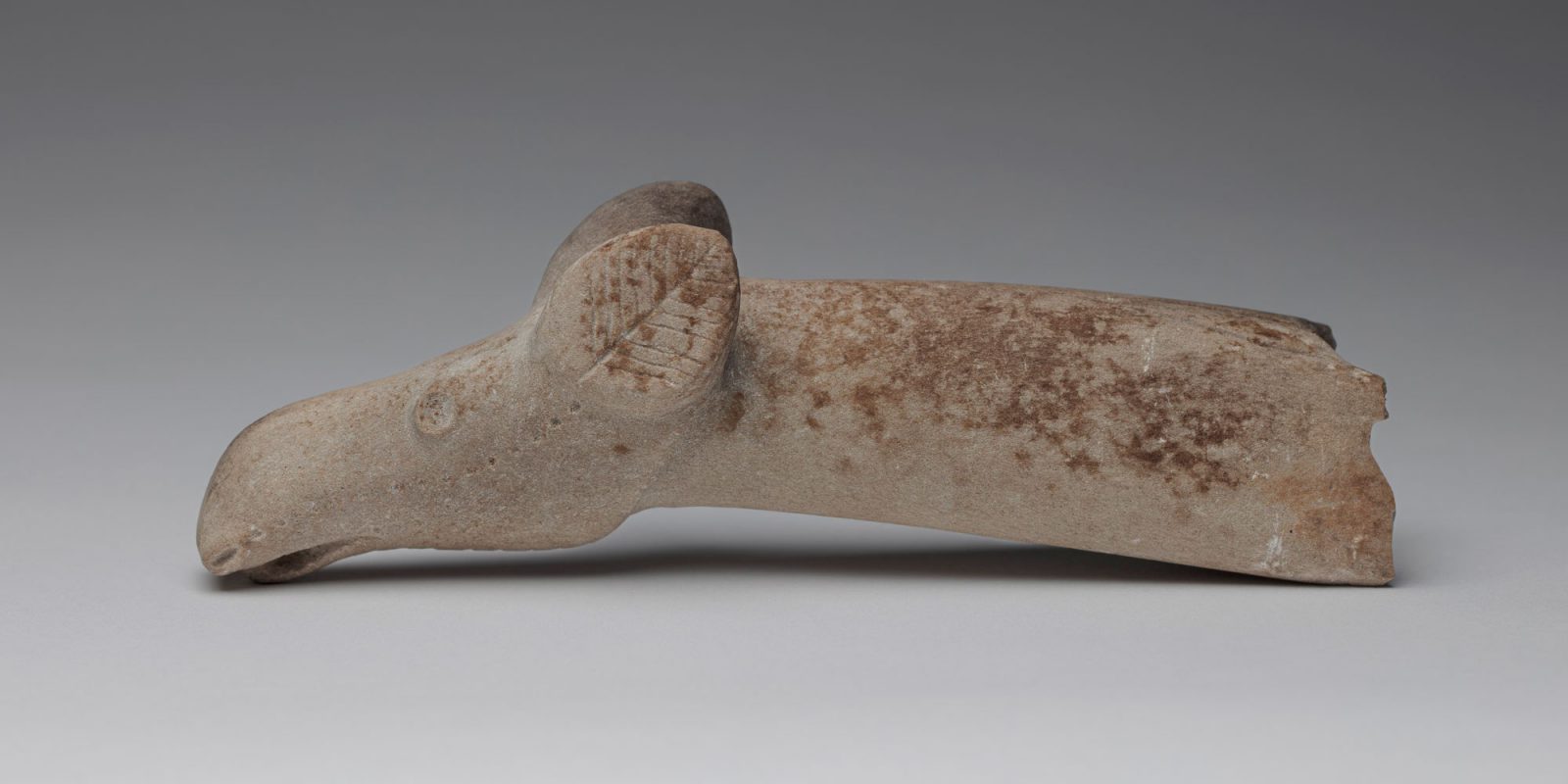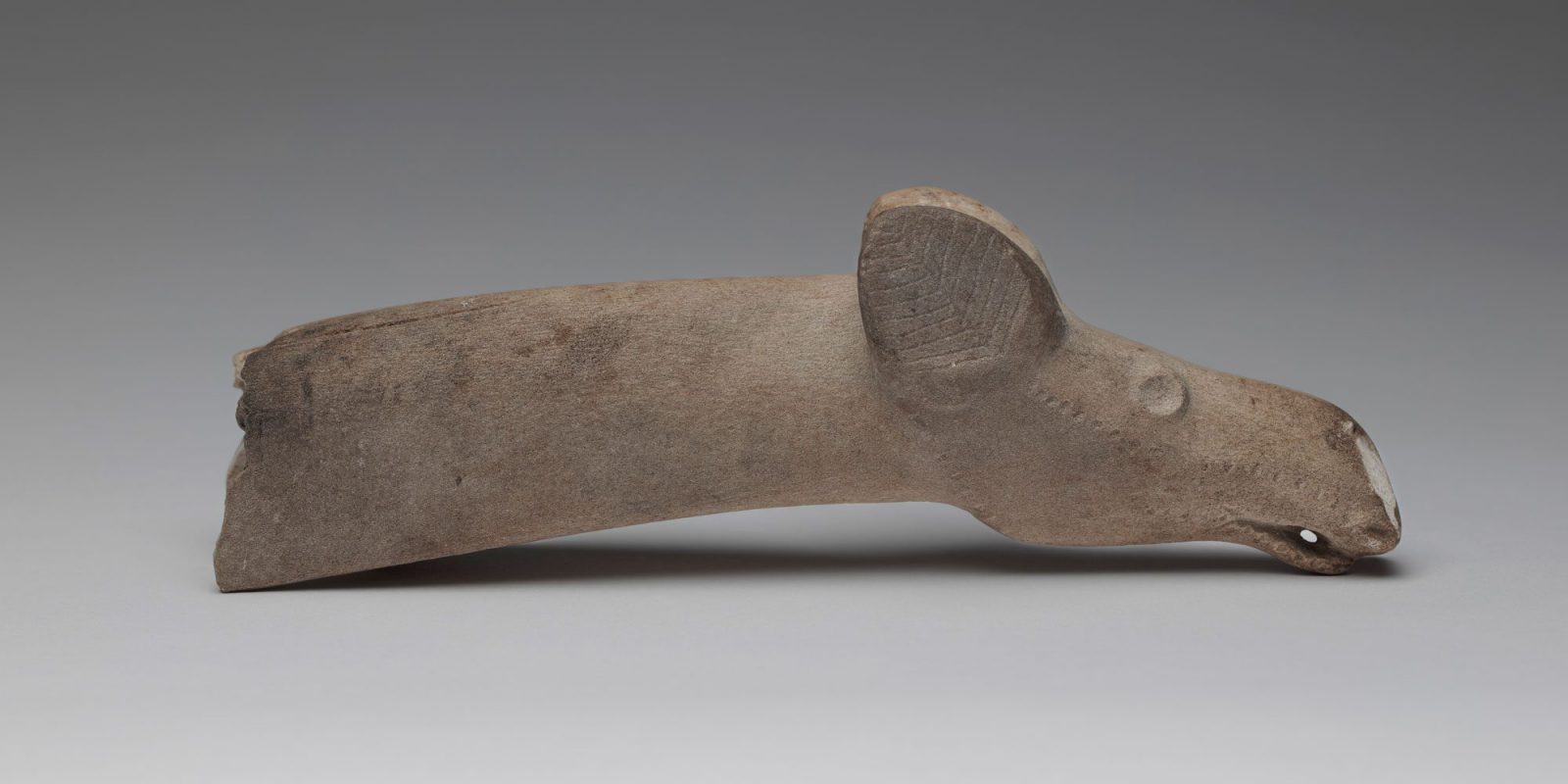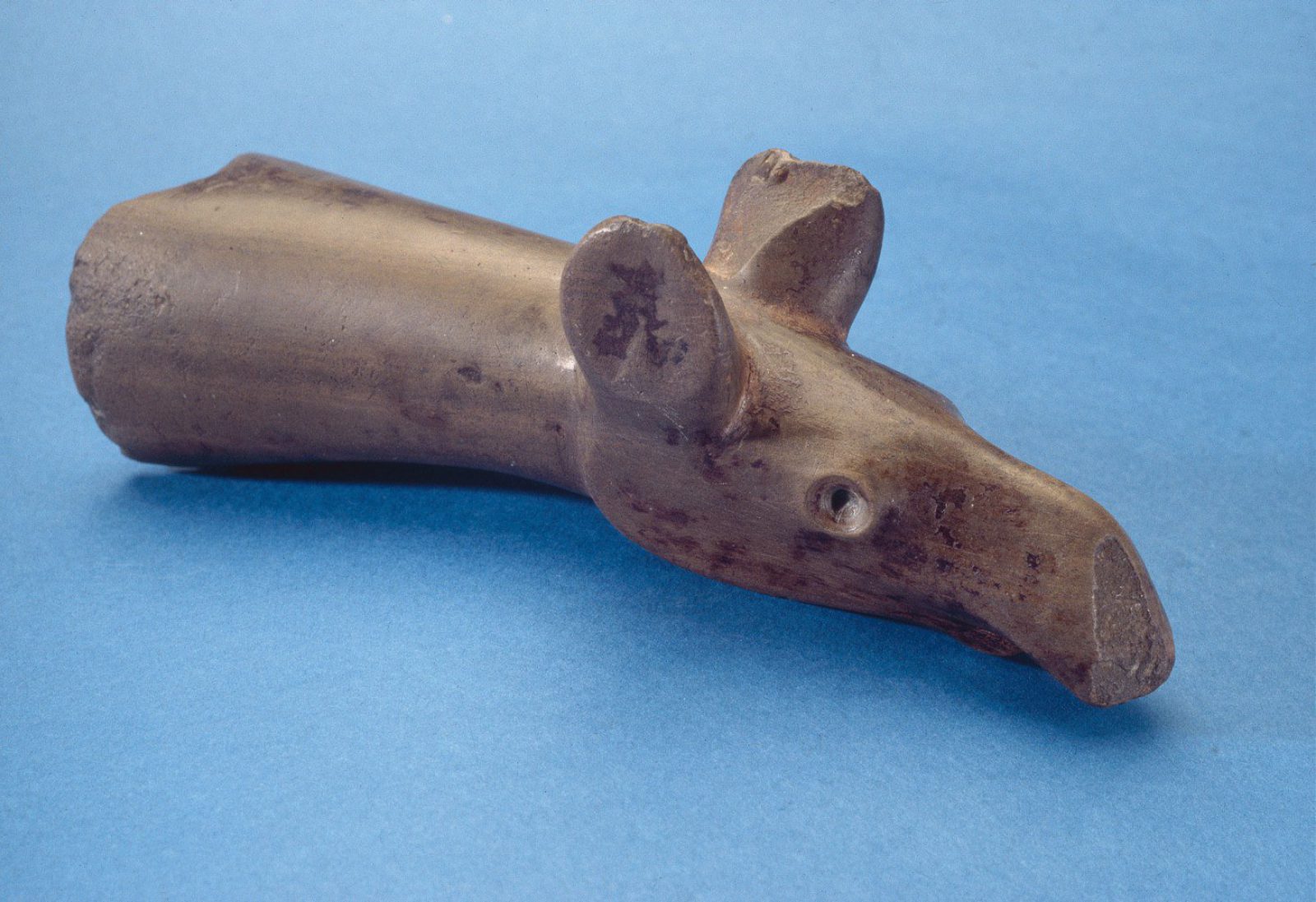
Stone Age moose head axe found in Kuusamo – one of the most significant prehistoric finds in Finland
In May 2023, a very rare archaeological find was made in Kuusamo: the poll part of a moose head axe made of stone. The discovery, which dates back some 4,000 years to the end of the Stone Age, parallels the famous moose heads of Huittinen and Säkkijärvi, which have been discovered well over a hundred years ago. The moose head will be on display at the Royals of the Forest exhibition in Häme Castle on 16 June.
The last similar discovery in Finland was the Säkkijärvi moose head, which was found in the 1890s and was added to the archaeological collections in 1907. Although animal head axes have been found since then, they are very rare finds and the more recent discoveries have not reached the level of the moose of Säkkijärvi and Huittinen in terms of aesthetics and technical implementation – until now.
“Although it is difficult to rank archaeological finds in order of importance, this is without a doubt one of the most remarkable artefacts of this millennium,” says Sami Raninen from the Finnish Heritage Agency.

The Kuusamo moose head, like the Säkkijärvi moose head, is the poll side of the stone axe used as a ritual or status object – the blade part is missing from both. The Kuusamo axe is 173 x 53 x 32 mm and weighs 319 grams. The Kuusamo moose resembles the Säkkijärvi moose so closely that they must be from the same era. To the extent possible, this new discovery may even be made by the same stone crafter, although there are differences in details. This connection, as well as other details, such as the type of stone and, therefore, possibly, the place of manufacture, will be determined by more detailed studies. Based on the type of stone, the Säkkijärvi moose head is probably made in Olonets Karelia. Objects may have moved over long distances, for example, through gifts exchanging.
The moose heads of Kuusamo and Säkkijärvi date back to the end of the Stone Age, the 20th century or the beginning of the 10th century BCE. Already in the 20th century BCE, a culture relying on livestock husbandry. had been established in southwestern and southern Finland. In the east and north, there was still a hunting and fishing economy. The famous hammer axes of the livestock herders were probably a model for the moose head and bear head axes that the hunter-fisher communities began to produce.

Moose was found in summer cottage beach
The axe was found by Raimo and Pirkko Virpi at their summer cottage beach when stones that were considered dangerous for children were pricked off the beach. The Virpis began to examine the background of a strange object. They received instructions from retired archaeologist Dr. Kirsti Paavola on how to properly report the discovery through the Ilppari notification service. Through Ilppari, the information went to the Northern Ostrobothnia Museum in Oulu, where Raimo Virpi brought the moose head. From Oulu, the moose was finally delivered to the Finnish Heritage Agency.
The Northern Ostrobothnia Museum has inspected the site and found signs of a protected archaeological site. Further investigations at the site of discovery have not yet been decided. The discovery site is private property, so it is not allowed to go there without permission. Protected archaeological sitemay not be tampered with anyway, and, for example, metal detector may not be used on them.

Discover in the Häme Castle and in Finna
The moose head axe will also be immediately on display to the public, as the National Museum of Finland's exhibition The Royals of the Forests will open in the Häme Castle, presenting the appearance of moose, wolf, bear and lynx in the Finnish cultural heritage. The exhibition also includes the moose head of Säkkijärvi and other objects from the archaeological collections of the Finnish Heritage Agency. The Royals of the Forests will be open in the Häme Castle from 16 June 2023 to 28 January 2024.
Pictures of the axe are available in the image bank and later on the Finna page of the Archaeological Collections. After the exhibition, the axe will remain in the collection of the Finnish Heritage Agency. Researchers will get to explore the discovery when the researcher service for archaeological collections opens after the move in 2026.
3D model made at Oulu Museum and Science Centre
Lisätietoja
Archaeological collections of the Finnish Heritage Agency in Finna
The Säkkijärvi moose head in Finna
Archaeological collections on the Finnish Heritage Agency website
Report a discovery of an ancient relic
The Royals of the Forests exhibition in Häme Castle
Kulttuurista perinnöksi: Animal art in archaeology (in Finnish)